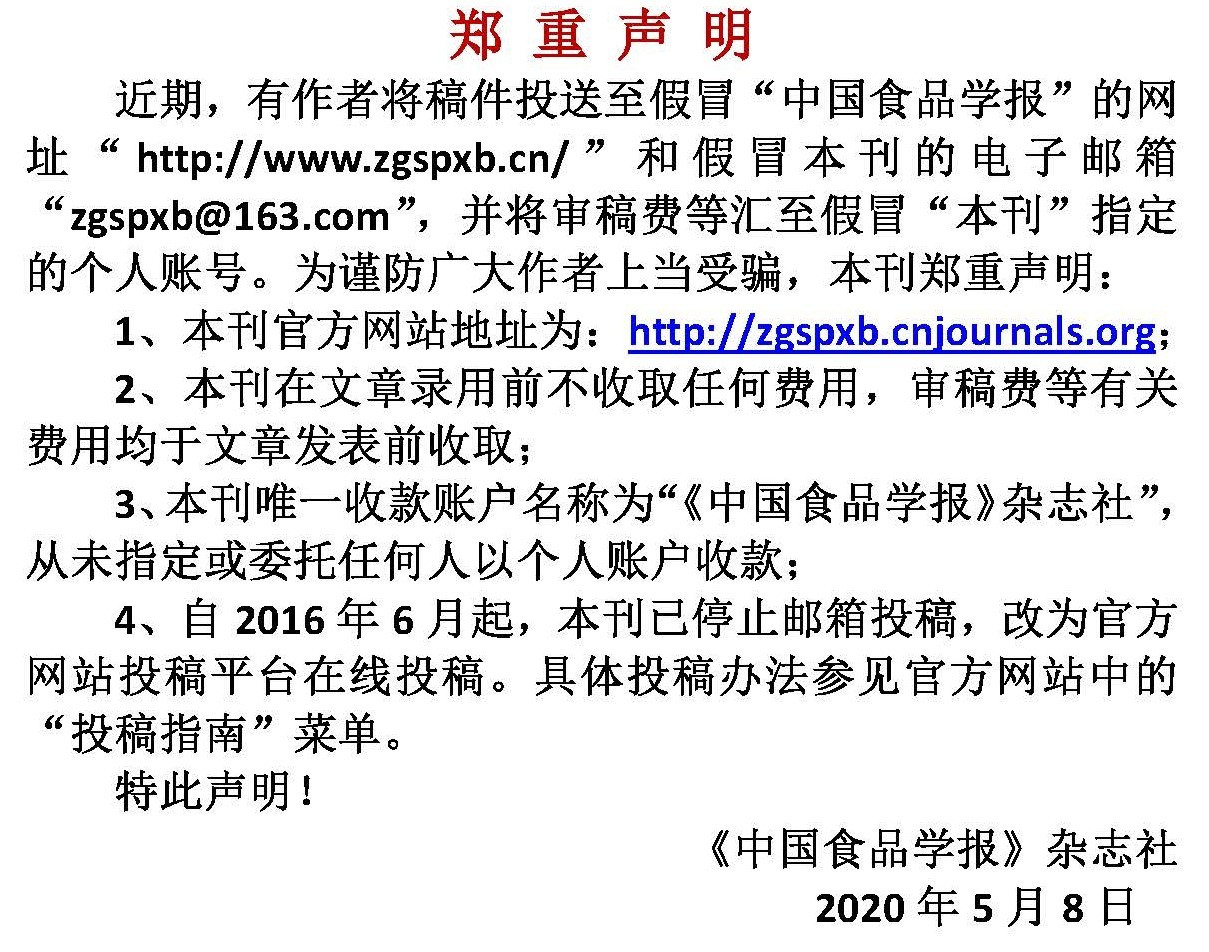4种凝结型亲水胶体对酸性低温杀菌魔芋凝胶品质的改善作用
作者:
作者单位:
(江西农业大学食品科学与工程学院 南昌 330045)
作者简介:
通讯作者:
中图分类号:
基金项目:
江西省现代农业产业技术体系建设专项(JXARS-19-4)
Effect of Four Kinds of Agglutinating Hydrocolloids on the Quality of Konjac Glucomannan Gels by Acidic Low-temperature Sterilization
Author:
Affiliation:
(College of Food Science and Engineering, Jiangxi Agricultural University, Nanchang 330045)
Fund Project:
引用本文
胡帅,刘沙,冯娅萍,张勉羚,牛丽亚,肖建辉.4种凝结型亲水胶体对酸性低温杀菌魔芋凝胶品质的改善作用[J].中国食品学报,2024,24(12):246-255
复制分享
文章指标
- 点击次数:
- 下载次数:
- HTML阅读次数:
历史
- 收稿日期:2023-12-01
- 最后修改日期:
- 录用日期:
- 在线发布日期: 2025-01-23
- 出版日期:
文章二维码

版权所有 :《中国食品学报》杂志社 京ICP备09084417号-4
地址 :北京市海淀区阜成路北三街8号9层 邮政编码 :100048
电话 :010-65223596 65265375 电子邮箱 :chinaspxb@vip.163.com
技术支持:北京勤云科技发展有限公司
地址 :北京市海淀区阜成路北三街8号9层 邮政编码 :100048
电话 :010-65223596 65265375 电子邮箱 :chinaspxb@vip.163.com
技术支持:北京勤云科技发展有限公司
